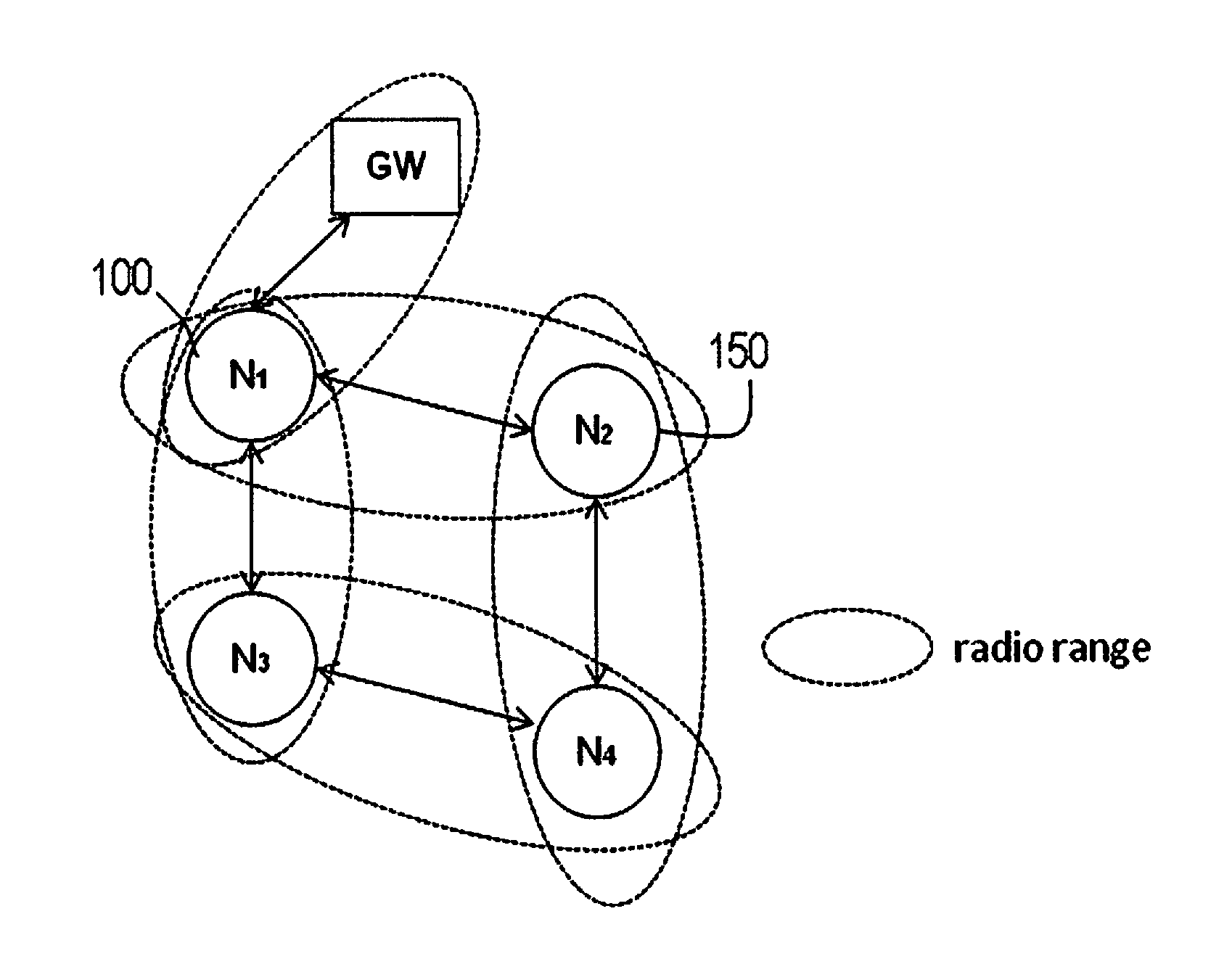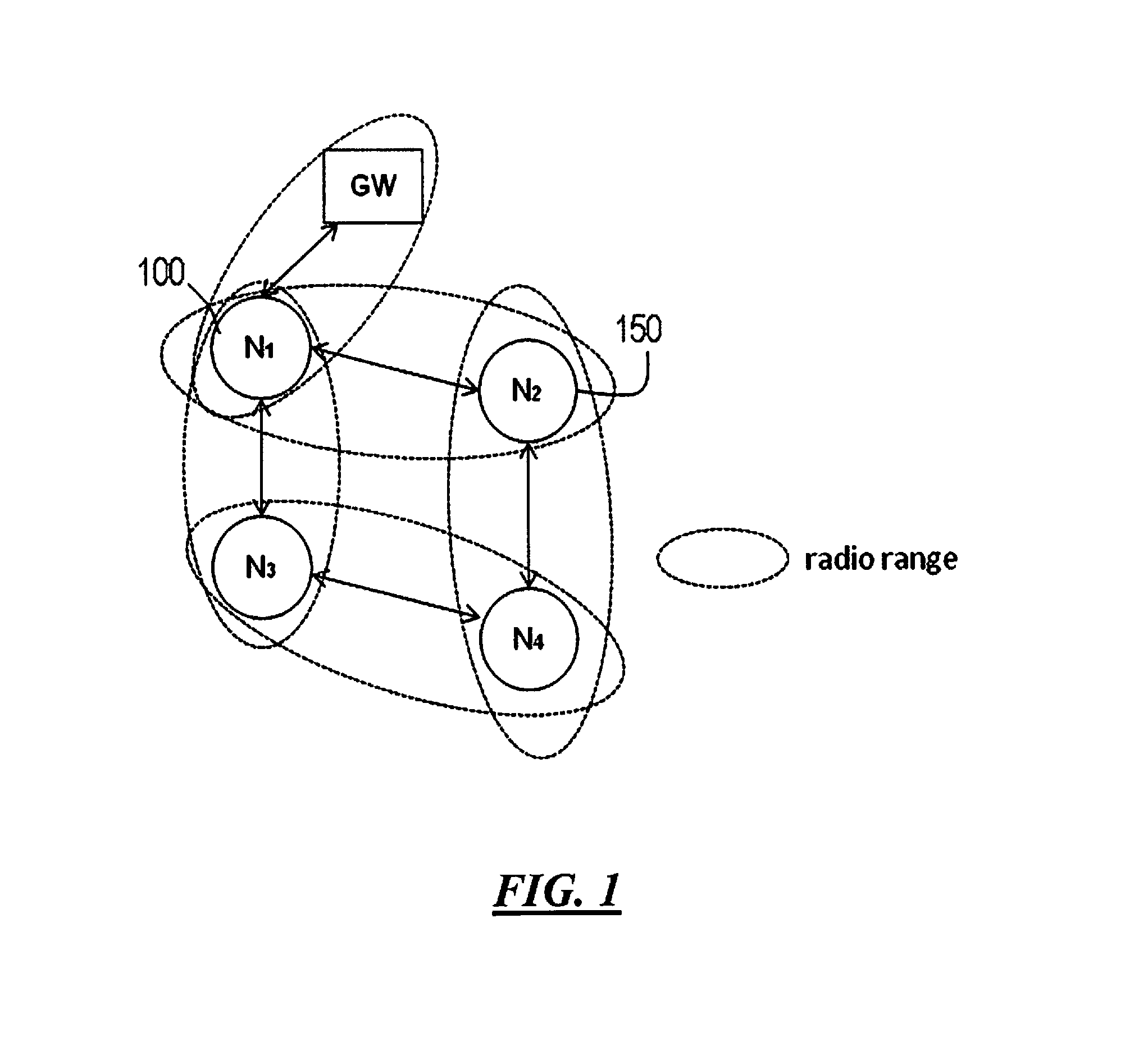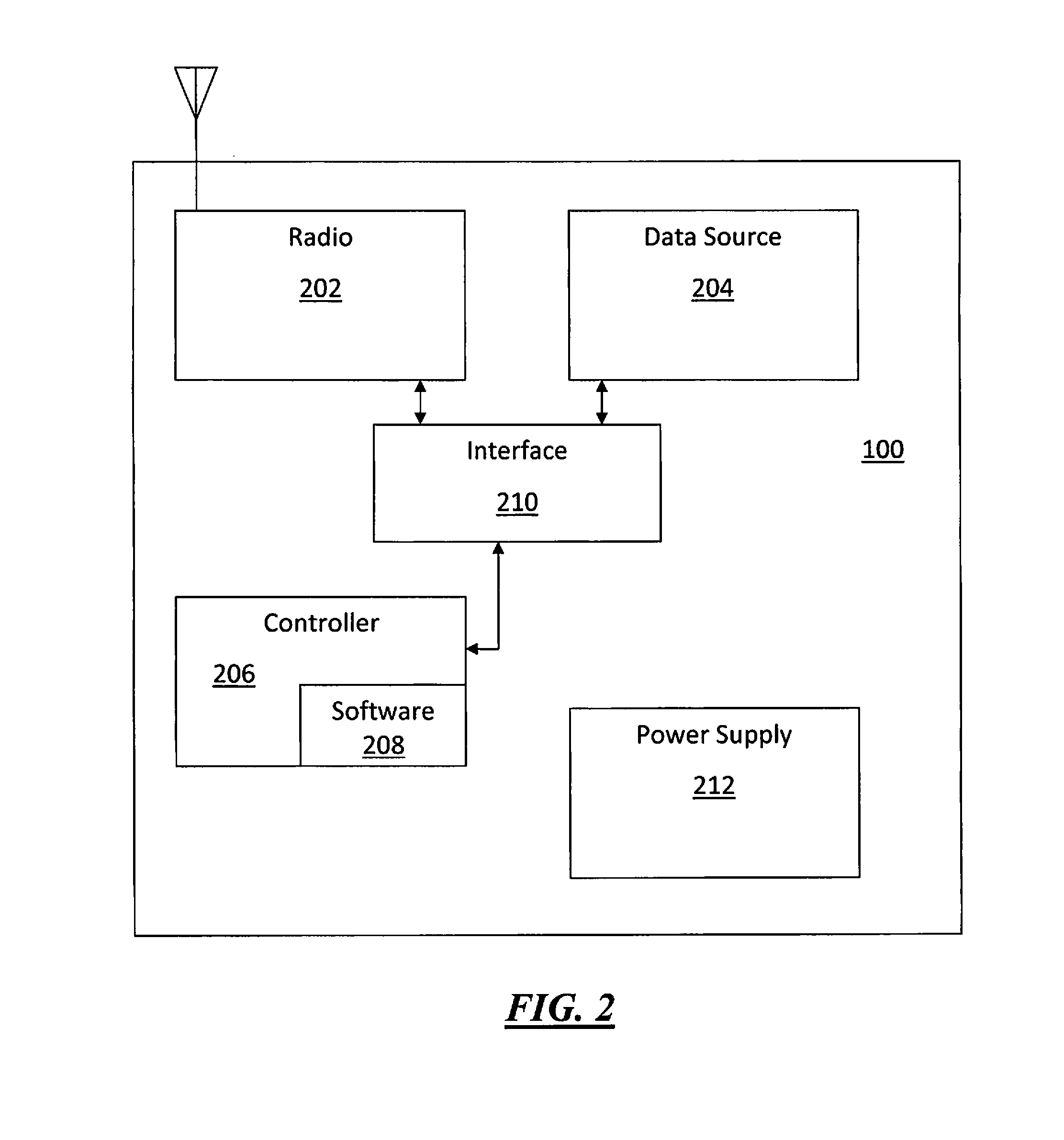Informational broadcast messages and its uses in wireless multihop networks
a wireless multi-hop network and information broadcasting technology, applied in the field of data communication via wireless multi-hop network, can solve the problems of inability to guarantee the reliability of wireless links, the busyness of communication channels, and the difficulty of so as to reduce the number of dedicated pair-wise neighbor connections, improve communication performance, and facilitate automatic management of communications overhead
- Summary
- Abstract
- Description
- Claims
- Application Information
AI Technical Summary
Benefits of technology
Problems solved by technology
Method used
Image
Examples
Embodiment Construction
[0029]Aspects of the invention are generally directed to adaptive communications in a heterogeneous wireless multihop network. A multihop network is one where node devices transmit data messages to one another, including through intermediate node devices that can act as routing devices for purposes of relaying data messages towards their final destination, which can be an endpoint node device on the local network, or a gateway node device that provides a connection between the local network and another network. A well-known example of a multihop network is the mesh network topology. Embodiments of the invention may be used in a variety of applications involving data communications. One such application is in energy metering, such as a radio frequency (RF) Mesh advanced metering infrastructure (AMI) network that can provide utilities with a single integrated-mesh network for electric, water and gas data communications with the ability to support multiple meter vendors. Such systems c...
PUM
 Login to View More
Login to View More Abstract
Description
Claims
Application Information
 Login to View More
Login to View More - R&D
- Intellectual Property
- Life Sciences
- Materials
- Tech Scout
- Unparalleled Data Quality
- Higher Quality Content
- 60% Fewer Hallucinations
Browse by: Latest US Patents, China's latest patents, Technical Efficacy Thesaurus, Application Domain, Technology Topic, Popular Technical Reports.
© 2025 PatSnap. All rights reserved.Legal|Privacy policy|Modern Slavery Act Transparency Statement|Sitemap|About US| Contact US: help@patsnap.com



